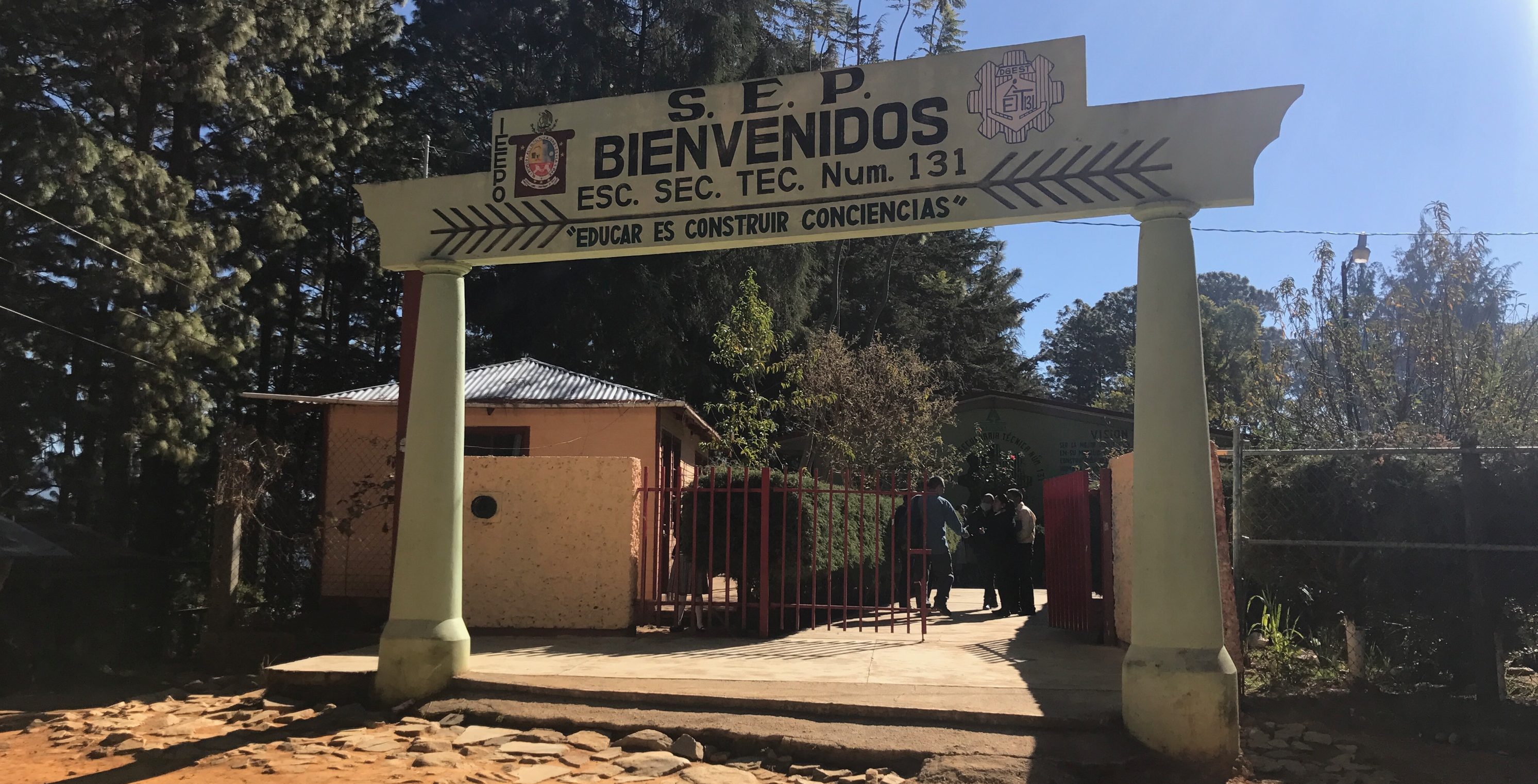This past January, I and my fellow Bard CEP classmates went on a two week research trip to Oaxaca, Mexico. During our time in the Sierra Sur region of Oaxaca, we visited the town San Miguel Suchixtepec, where we spent time at a local public school with a high regard for environmental stewardship.
 The school has integrated multiple green practices to decrease its environmental impact and close the nutrient cycle, including using dry composting toilets, capturing rainwater, and filtering grey water.
The school has integrated multiple green practices to decrease its environmental impact and close the nutrient cycle, including using dry composting toilets, capturing rainwater, and filtering grey water.
During our visit, we were able to engage with students, faculty, and members of the World Wildlife Fund (WFF) and a local NGO, Mbis Bin. Support and funding from WWF and Mbis Bin have made this opportunity possible for the students.
We experienced the students’ sense of pride in their contributions to bettering the planet. Having them share their work and experiences with us was an empowering moment for them and for us.
Reforestation–from the Pine Tree to the Watershed
 The students are also involved in a reforestation project. Reforestation plays a vital role in watershed management by reducing erosion and slowing the rate water flows. Each student is assigned a pine tree at the school to care for by weeding around it, making sure it receives enough light, and watering it during the dry season.
The students are also involved in a reforestation project. Reforestation plays a vital role in watershed management by reducing erosion and slowing the rate water flows. Each student is assigned a pine tree at the school to care for by weeding around it, making sure it receives enough light, and watering it during the dry season.
The saplings planted at the school are grown at Rancho Alternativo, which grows thousands of saplings with the help of local community members who germinate and care for the saplings. This places money into the local economy and benefits the community.
These saplings are then purchased by the WWF and donated to different reforesting projects like the one at the school we visited. They’re grown from native seeds to increase genetic diversity and improve their ability to adapt to climate change.
Intact Forests Benefit Both Communities and the Watershed
Later in the trip we met with scientist John Williams, who works in the San Pablo Etla area. Williams is working on determining the effects of climate change on plant growth in the region by studying plots at two different elevations.
Perhaps more importantly, his measurements also account for carbon storage, potentially paving the way for the community to receive ecosystem service payments through REDD+ for carbon sequestration. If a community is able to receive payments for its dense forest, it may be less likely to sell off their timber, thereby also promoting watershed health.
Dense forest is vital to the watershed and access to clean drinking water is vital to communities. Although selling timber can be lucrative, it doesn’t benefit the community in the long run. REDD+ provides an alternative source of revenue for communities that want to keep their forests intact and acts as an incentive to keep other communities and individuals from deforesting.
Comparisons to the Hudson Valley
 Coming back from Oaxaca, I’ve started to think about comparisons in the Hudson Valley. During the fall semester, we visited a local farm located in Catskill/Delaware Valley watershed, Crystal Valley Farm. While we were there, we talked with the farm owners as well as members of the Watershed Agricultural Council (WAC).
Coming back from Oaxaca, I’ve started to think about comparisons in the Hudson Valley. During the fall semester, we visited a local farm located in Catskill/Delaware Valley watershed, Crystal Valley Farm. While we were there, we talked with the farm owners as well as members of the Watershed Agricultural Council (WAC).
We discussed the history of the New York City Watershed and the option to either build an expensive water treatment plant or to change watershed agricultural practices in order to have cleaner water. The WAC chose the latter, and its work is similar to what Mbis Bin and WFF are accomplishing in the Sierra Sur region of Oaxaca. Payment for ecosystem services, such as reforestation, can have positive impacts on both the environment and the local community and be more economically viable than built infrastructure.
